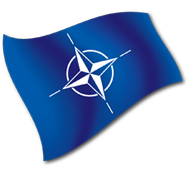International collaboration is a vital program component of the Blast Injury Research Coordinating Office's
directive to coordinate and manage the multidisciplinary research efforts that are saving lives, reducing injury,
and speeding the recovery of injured Service Members, Veterans, and civilian victims of conflict and terrorism.

The US-Japan Data Exchange Agreement (DEA) Annex, DEA-DT-2015-JA-0001, provides for exchange of scientific, technical, and test and evaluation information pertaining to counter-chemical, biological, radiological, and high yield explosives (C-CBRE) technologies between the US Department of Defense (DoD) and the Ministry of Defense of Japan. Under the DEA, information from experimental laboratory and field studies is shared to further mutual understandings of the mechanism of blast injury and strategies for the prevention, mitigation, and treatment of these injuries.
Read more...
The US-Japan Service to Service (S2S) Forum Meeting was formally established on November 5, 2015 under a Terms of Reference, and is the US Army's highest level bilateral Armaments Cooperation forum with Japan. The S2S provides a forum for the US and Japan to share Army/Ground materiel and technology requirements, identify common technology gaps, and attempt to address those gaps with armaments cooperation solutions, i.e., Information and Personnel Exchanges, and Project Arrangements.
Read more...

The Blast Injury Research Coordinating Office (BIRCO), US Army Research Development and Engineering Command (now the U.S. Army Combat Capabilities Development Command), International Technology Center-Pacific (ITC-PAC), and Office of Naval Research-Global sponsored the project, "Injury Mechanisms in Blast and Blunt TBI – A Comparative Study Based on Clinical Data and Numerical Analysis." Conducted by researchers from the All India Institute of Medical Sciences, Indian Institute of Technology-Delhi, and the New Jersey Institute of Technology (NJIT), the project investigated mechanisms of injury for blast and blunt neurotrauma.
BIRCO was the DOD lead for the strategic international U.S.-India Project Agreement #US-IN-A-16-0002 titled "Experimental & Computational Studies of Blast and Blunt Traumatic Brain Injury," which concluded phase I in 2020. This project was part of the U.S.-India Defense Trade and Technology Initiative to enhance strategic cooperation between the DOD and India Ministry of Defence.
Participating organizations included DOD (U.S. Army Medical Research and Development Command, Telemedicine and Advanced Technology Research Center–Biotechnology High-Performance Software Applications Institute, U.S. Naval Research Laboratory, U.S. Army Combat Capabilities Development Command Army Research Laboratory, and Walter Reed Army Institute of Research); U.S. academia (New Jersey Institute of Technology); and MOD labs (Defence Research and Development Organization and Institute of Nuclear Medicine and Allied Sciences).
Project objectives included the following:
Major accomplishments included the following:
The next phase of this effort seeks to understand and resolve the effects of repeated low-level blasts typically faced by Service members during combat and in training. Studies such as these build towards a better understanding of the mechanisms of injury in TBI. Further research in this area will benefit Service members by accelerating the development and transition of blast injury prevention and treatment strategies.
Read more...

Annex Number DEA-A-1977-IS-1230 under the Mutual Weapons Development Master Data Exchange Agreement between the US and Israel established a data exchange project that provides for the exchange of medical research, development, test and evaluation data and defense information of relevance to military medical operational forces. Under the DEA, the US Army Medical Research and Development Command (USAMRFC) and counterparts in Israel share vital information on topics that include:
Read More: US & Israel Collaborate to Advance Military Medicine
Read more...

For more information about the NATO Science and Technology Organization (STO), under which the Human Factors and Medicine (HFM) Panel resides, read more...
Building on the HFM-270 RTG work (described below), BIRCO is chairing a new RTG: Validation of Modeling and Simulation Methodologies for Human Lethality, Injury, and Impairment from Blast-Related Threats. The objective of this RTG, HFM-341, is to develop standardized methodologies and criteria to validate computational models and the simulation approaches established in the HFM-270 for the entire spectrum of blast-related injuries to mounted and dismounted personnel. The outcome will be an approach and criteria to validate component computational models and simulation techniques.
BIRCO is co-chairing, with the U.S. Army Military Operational Medicine Research Program, the newly formed NATO HFM-Exploratory Team-192, Blast Exposure Monitoring in Military Training and Operations. The primary purpose of this exploratory team is to understand Service member occupational health hazards resulting from repetitive use of weapon systems and explosives during their military career. The secondary purpose is to recommend a need for further exploration for strategies to prevent, mitigate unnecessary exposures, and sustain Service members' brain health and performance. Outcomes from this effort will include both documentation of known and unknown relationships among blast exposure, brain health, and performance and also strategies used by NATO members to mitigate unnecessary exposures and brain health degradation.
The HFM-234 RTG, chaired by the Director of the Blast Injury Research Coordinating Office (BIRCO), was tasked with establishing a framework for a new interdisciplinary research area focusing on the environmental toxicology of blast exposure. To meet this goal, HFM-234 RTG developed a dictionary of blast injury terms, and guidelines for conducting epidemiological studies, reproducing blast exposures in the laboratory, and using animal models in blast injury research. These products are the first ever international guidelines for conducting blast injury research.
Through the efforts of 17 members from nine NATO nations, HFM-234 RTG published the following documents:
By promoting standardization in experimental methods, data collection, and reporting, the outcomes of HFM-234 RTG eliminates the obstacles that hinder collective research efforts and facilitate international collaboration to improve the prevention, treatment, and mitigation of blast injuries for our Service Members and our partner nations.
There is a need for computational models to describe blast threats, the interaction of the threat with the protection system, the interaction of the protection system with the human, the ultimate blast loading on the human, and the spectrum of human responses to the blast load received. To address this gap, the NATO Science and Technology Organization established HFM-270 RTG: Framework for Modeling and Simulation of Human Lethality, Injury, and Impairment from Blast-related Threats. The BIRCO Director and Deputy Director served as Chair and Executive Secretary of this RTG, respectively. The HFM-270 RTG leveraged previous, ongoing, and planned blast injury biomedical research and computational modeling efforts among the participating nations to develop a framework for translating scientific information into the capability to model the mechanisms of human lethality, injury, and impairment across the spectrum of blast-related threats. The topics considered by this working group included:
The HFM-270 RTG's three-year effort produced a framework for the development of a comprehensive, threat-to-outcome computational modeling capability that can support an agile and streamlined approach to designing, testing, and fielding blast protection equipment for our Service members and our partner nations. A final technical report is in preparation comprising an extensive literature review of existing computational models, thorough list of modeling gaps, robust repository of information on existing modeling capabilities, and comprehensive dictionary of modeling and simulation terms.
Read more...
Your 15 minute session will timeout in approximately 10 minutes.
If you're in the middle of entering information, please close this warning and save your progress (if possible) or finish up your task.
If your session fully times out, you will lose any un-saved work.
Your current Blast Injury Research Program session has expired.
Your next click will take you away from the private area, and you will lose any work you have in-progress.
Please enter your email address, and try again.